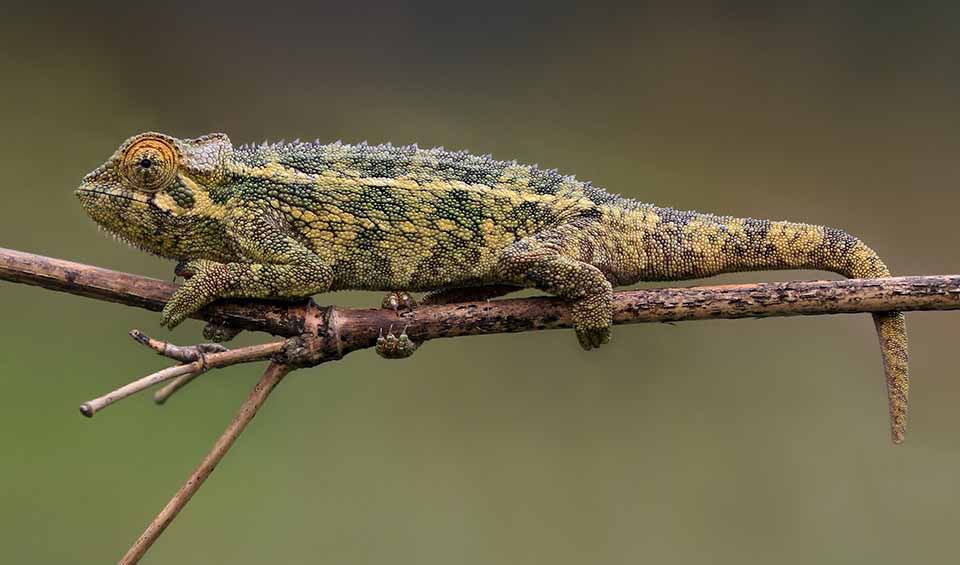A small and rugged-looking chameleon found in the cool, high-altitude forests and grasslands of East Africa, especially around the Ruwenzori Mountains and southwestern Uganda. Unlike some of its more flamboyant relatives, the coarse chameleon is less colorful but no less fascinating. It gets its name from its rough, textured scales, which give it a rugged appearance that helps it blend in with bark, twigs, and leafy undergrowth. Its muted colors—usually a mix of browns, greens, and grays—serve as excellent camouflage in its misty, mountainous habitat.
What makes the coarse chameleon different from many other members of the Trioceros genus is its lack of dramatic horns or flashy ornamentation. While some Trioceros species, like Jackson’s chameleon, sport prominent horns and crests, this one is more understated. It typically has a small casque (helmet-like bump) on its head and short spikes along its back, but nothing as showy as its horned cousins. This makes it better suited to staying hidden among thick vegetation, where it spends most of its time slowly climbing or waiting still for passing insects to catch with its lightning-fast tongue.
A fun and unusual fact about the coarse chameleon is that it gives birth to live young instead of laying eggs—a trait shared by some high-altitude chameleons. This adaptation is likely linked to the cooler climate in which it lives, where eggs might not survive long enough to hatch. A mother chameleon can give birth to several tiny, fully formed babies, which are independent from the moment they’re born. Within hours, these miniature chameleons begin climbing and hunting on their own, a remarkable start to life in the wild.
Distribution
 Burundi
Burundi DR Congo (Kinshasa)
DR Congo (Kinshasa) Kenya
Kenya Rwanda
Rwanda South Sudan
South Sudan Tanzania
Tanzania Uganda
UgandaAnything we've missed?
Help us improve this page by suggesting edits. Glory never dies!
Suggest an editGet to know me
Terrestrial / Aquatic
Altricial / Precocial
Polygamous / Monogamous
Dimorphic (size) / Monomorphic
Active: Diurnal / Nocturnal
Social behavior: Solitary / Pack / Herd
Diet: Carnivore / Herbivore / Omnivore / Piscivorous / Insectivore
Migratory: Yes / No
Domesticated: Yes / No
Dangerous: Yes / No




